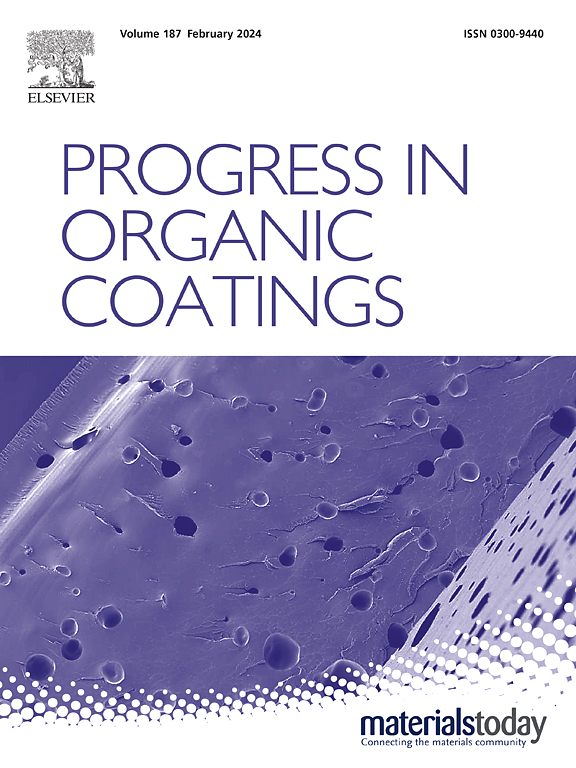Fabrication of self-healing superhydrophobic film via inhibitor loaded LDH for improving the anti-corrosion performance of aluminum alloy
IF 6.5
2区 材料科学
Q1 CHEMISTRY, APPLIED
引用次数: 0
Abstract
The critical factor in developing an environmentally friendly conversion film to replace chromium passivated films is endowing the conversion film with self-healing capabilities and enhancing its anti-corrosion properties. In this study, layered double hydroxides (LDH) films with self-healing characteristics were fabricated in situ on aluminum alloy surfaces by intercalating tungstate ions. Simultaneously, the unique microstructure of the LDH film was leveraged to fabricate superhydrophobic films via surface modification with fluorosilane. Scanning electron microscopy (SEM) results reveal that the prepared LDH films exhibit a uniform and dense lamellar structure. The intercalation of tungstate ions and the surface modification with fluorosilane do not compromise the structural integrity of the films. The water contact angle of the prepared films reaches up to 171°. Electrochemical impedance spectroscopy (EIS) results demonstrate that the protective efficiency of the films is 99.9 %. Even after prolonged immersion in NaCl solution for 80 days, the protective efficiency remains at 99.6 %. Furthermore, EIS results of artificially scratched samples show significant self-healing capabilities. The self-healing mechanism involves the release of tungstate ions to the scratched areas, which subsequently form a dense oxide layer on the aluminum alloy surface, thereby repairing the damaged film.
负载LDH缓蚀剂制备自愈超疏水膜以提高铝合金的防腐性能
开发替代铬钝化膜的环保型转化膜的关键是使转化膜具有自愈能力并提高其抗腐蚀性能。本研究通过嵌入钨酸盐离子,在铝合金表面原位制备了具有自愈特性的层状双氢氧化物(LDH)薄膜。同时,利用LDH薄膜独特的微观结构,通过氟硅烷表面改性制备了超疏水薄膜。扫描电镜(SEM)结果表明,制备的LDH薄膜具有均匀致密的层状结构。钨酸盐离子的插入和氟硅烷的表面修饰都不影响薄膜的结构完整性。所制备薄膜的水接触角可达171°。电化学阻抗谱(EIS)结果表明,膜的保护效率为99.9%。即使在NaCl溶液中长时间浸泡80 d,其保护效率仍保持在99.6%。此外,人工划伤样品的EIS结果显示出显著的自修复能力。自修复机制包括将钨酸盐离子释放到划伤区域,随后在铝合金表面形成致密的氧化层,从而修复损坏的薄膜。
本文章由计算机程序翻译,如有差异,请以英文原文为准。
求助全文
约1分钟内获得全文
求助全文
来源期刊

Progress in Organic Coatings
工程技术-材料科学:膜
CiteScore
11.40
自引率
15.20%
发文量
577
审稿时长
48 days
期刊介绍:
The aim of this international journal is to analyse and publicise the progress and current state of knowledge in the field of organic coatings and related materials. The Editors and the Editorial Board members will solicit both review and research papers from academic and industrial scientists who are actively engaged in research and development or, in the case of review papers, have extensive experience in the subject to be reviewed. Unsolicited manuscripts will be accepted if they meet the journal''s requirements. The journal publishes papers dealing with such subjects as:
• Chemical, physical and technological properties of organic coatings and related materials
• Problems and methods of preparation, manufacture and application of these materials
• Performance, testing and analysis.
 求助内容:
求助内容: 应助结果提醒方式:
应助结果提醒方式:


